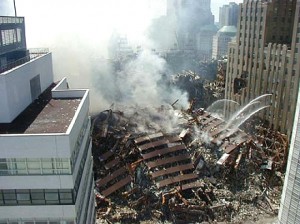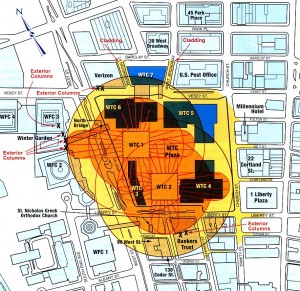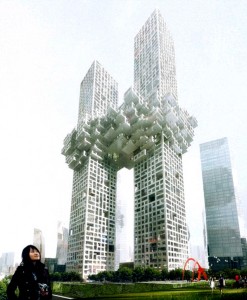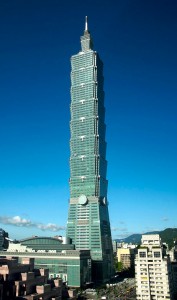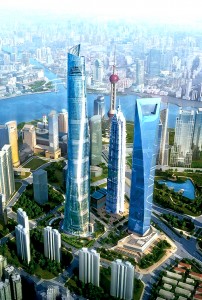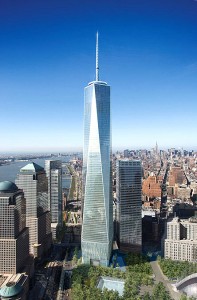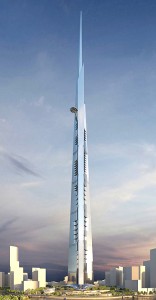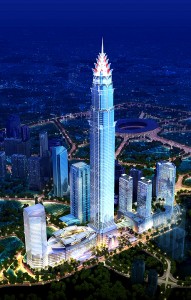1st Series of Posts on the 2005 NIST WTC 1 & 2 Collapse Recommendations … which began towards the end of 2011 …
2011-10-25: NIST’s Recommendations on the 9-11 WTC Building Collapses … GROUP 1. Increased Structural Integrity – Recommendations 1, 2 & 3 (out of 30)
Previous Post in this New Series …
2012-01-18: Progressive Collapse of WTC 7 – 2008 NIST Recommendations – Part 1 of 2 … GROUP 1. Increased Structural Integrity – Recommendation A … and GROUP 2. Enhanced Fire Endurance of Structures – Recommendations B, C, D & E (out of 13)
.
2012-01-22: SOME PRELIMINARY COMMENTS …
1. Keeping my ear closely to the ground … I hear you wondering: “So … how did the fires actually start in World Trade Center Building 7 ?”
Extracts from the Executive Summary (pages xxxi – xxxv) – 2008 NIST NCSTAR 1A …
[ Refer back to the WTC 1 & 2 Collapse Damage Plan in the previous post.]
The fires in WTC Building 7 were ignited as a result of the impact of debris from the collapse of WTC Tower 1, which was approximately 110 metres to the south. The debris also caused some structural damage to the south-west perimeter of WTC 7. The fires were ignited on at least 10 floors; however, only the fires on Floors 7 to 9 and 11 to 13 grew and lasted until the time of building collapse. These uncontrolled fires had characteristics similar to those that have occurred previously in tall buildings. Their growth and spread were consistent with ordinary building content fires. Had a water supply for the automatic sprinkler system been available and had the sprinkler system operated as designed, it is likely that the fires in WTC 7 would have been controlled, and the collapse prevented. However, the collapse of WTC 7 highlights the importance of designing fire resisting structures for situations where sprinklers are not present, do not function (e.g. due to disconnected or impaired water supply), or are overwhelmed.
and …
There were no serious injuries or fatalities, because the estimated 4,000 occupants of WTC 7 reacted to the airplane impacts on the two WTC Towers and began evacuating before there was significant damage to WTC 7. The occupants were able to use both the elevators and the stairs, which were as yet not damaged, obstructed, or smoke-filled. Evacuation of the building took just over an hour. The potential for injuries to people leaving the building was mitigated by building management personnel holding the occupants in the lobby until they identified an exit path that was safe from the debris falling from WTC Tower 1. The decisions not to continue evaluating the building and not to fight the fires were made hours before the building collapsed, so no emergency responders were in or near the building when the collapse occurred.
and …
The design of WTC 7 was generally consistent with the New York City Building Code of 1968 (NYCBC), with which, by policy, it was to comply. The installed thickness of the thermal insulation on the floor beams was below that required for unsprinklered or sprinklered buildings, but it is unlikely that the collapse of WTC 7 could have been prevented even if the thickness had been consistent with building code requirements. The stairwells were narrower than those required by the NYCBC, but, combined with the elevators, were adequate for a timely evacuation on 11 September 2001, since the number of building occupants was only about half that expected during normal business hours.
The collapse of WTC 7 could not have been prevented without controlling the fires before most of the combustible building contents were consumed. There were two sources of water (gravity-fed overhead tanks and the city water main) for the standpipe and automatic sprinkler systems serving Floor 21 and above, and some of the early fires on those upper floors might have actually been controlled in this manner. However, consistent with the NYCBC, both the primary and back-up source of water for the sprinkler system in the lower 20 floors of WTC 7 was the city water main. Since the collapses of the WTC Towers had damaged the water main, there was no water available (such as the gravity-fed overhead tanks that supplied water to Floor 21 and above) to control those fires that eventually led to the building collapse.
Link to read and/or download a copy of the 2008 NIST NCSTAR 1A Report … www.fireox-international.eu/fire/structdesfire.htm
.
2. On a separate subject and quite by chance … a few days ago, I was invited to review a technical paper for a reputable international fire engineering journal (which shall remain nameless). The paper was discussing a certain aspect of steel column critical temperatures. After three days, I replied to the journal’s editor as follows …
2012-01-18.
Most regrettably, I must decline your invitation to review Paper XYZ.
The ‘critical temperature’ approach to the fire engineering design of steel-framed structures is deeply flawed … and obsolete.
C. J. Walsh, FireOx International – Ireland, Italy & Turkey.
The ‘critical temperature’ approach is antiquated … and this nonsense has got to stop ! NOW … would be the best time !!
.
3. In the last post, I wrote …
Structural Fire Engineering is concerned with those aspects of fire engineering which relate to structural design for fire, and the complex architectural interaction between a building’s structure and fabric, i.e. non-structure, under conditions of fire and its immediate aftermath.
Indeed ! But, more needs to be added …
I hope it is becoming clearer now that Structural Fire Engineering is not just ambient structural engineering with a few extra ‘bells and whistles’ grafted on … in token consideration of what could happen in fire conditions, i.e. at high temperatures.
[ If, in some jurisdictions, there are no legal requirements to add even those ‘bells and whistles’ … then, typically, even they will be omitted ! ]
This brings me right back to the typical education of Civil/Structural Engineers; because: (i) they exit the educational system with little understanding of anything beyond ‘structure’ … in other words, a ‘real’ building, which also comprises ‘fabric’, i.e. non-structure, is a mystery to them; and (ii) they have difficulty reading architectural drawings … which is why a walk-through inspection of a building, as it is nearing completion, is much preferred over a detailed discussion about drawings at the most appropriate stage, which is well before construction commences … when faults can be readily identified and easily rectified !
In ambient conditions … the architectural interaction between a building’s structure and fabric is difficult, not being entirely static. Before the surface finishes have been applied, it is immediately obvious when this interaction has been properly ‘designed’, and looks neat and tidy … or, on the vast majority of construction sites, when this interaction is a ‘traffic accident’, and the results are desperately ugly … and you know that they can’t apply the surface finishes quickly enough in order to hide everything from view !
In fire conditions … this architectural interaction between building fabric and structure is complex, certainly very dynamic … and fluid !
It would be more appropriate to think of Structural Fire Engineering as ‘Design in the Hot Form’ … which is a completely different mindset.
It is essential, therefore, that Fire Engineers understand ‘real’ buildings … most importantly, the ‘design’ of real buildings … and, that they know which end is ‘up’ on a real construction site !! See NIST WTC 7 Recommendation L below.
.
4. Since the collapse of WTC Building 7 on 11 September 2001, it has been generally assumed that Fire-Induced Progressive Collapse is a large-scale, macro-phenomenon only. But, believe it or not, this phenomenon has also been observed at micro-level in small building types.
In fact … Progressive Collapse was already receiving sporadic attention, in Ireland, as far back as the 1980’s …
- As organizer of the 1987 Dublin International Fire Conference: ‘Fire, Access & Safety in Residential Buildings’, I requested that the following Paper be presented … ‘Design against Progressive Collapse in Fire’ … by Dr. Willie Crowe, who was Head of Construction Technology, in the old Institute for Industrial Research & Standards (IIRS) in Ireland. He later became Manager of the Irish Agrément Board (IAB). Those were the days … and Willie really knew his stuff !
Mr. Noel C. Manning, of FireBar in Ireland (www.firebar.ie), and I both contributed to the development of his Paper.
And now is as good a time as any to give full credit to Noel Manning for his innovative approach to Structural Fire Engineering back in the early 1980’s. He’s a ‘hard man’ … a term that we use for some special people in Ireland !
Link to the Dublin International Fire Conferences, and a copy of this Paper … www.fireox-international.eu/fire/dublinfire.htm
- For approximately 12 years from the mid-1980’s, I was a Member of the National Masonry Panel – the National Standards Authority of Ireland (NSAI) Masonry Standards Advisory Committee. A small, but substantial, text on Fire-Induced Progressive Collapse in Buildings was included, by me, in the following standard … Irish Standard 325: Code of Practice for Use in Masonry – Part 2: Masonry Construction (1995). Appendix A – Determination of Movement in Masonry. A.3 – Thermal Movement. Once again … those were the days … when I was the only architect in a sea of engineers !! Not a pretty experience.
.
5. What next ? A final draft of the International CIB W14 Research WG IV Reflection Document on Fire-Induced Progressive Collapse will be completed in time for circulation to all CIB W14 members before the end of March 2012 … well in time for the next CIB W14 Meetings in Greece, near the end of April 2012.
.
2008 NIST WTC 7 RECOMMENDATIONS (Final Report NCSTAR 1A)
5.1.3 GROUP 3. New Methods for Fire Resisting Design of Structures
The procedures and practices used in the fire resisting design of structures should be enhanced by requiring an objective that uncontrolled fires result in burnout without partial or global (total) collapse. Performance-based methods are an alternative to prescriptive design methods. This effort should include the development and evaluation of new fire resisting coating materials and technologies, and evaluation of the fire performance of conventional and high-performance structural materials.
NIST WTC 7 Recommendation F (NCSTAR 1 Recommendation 8).
NIST recommends that the fire resistance of structures be enhanced by requiring a performance objective that uncontrolled building fires result in burnout without partial or global (total) collapse. Such a provision should recognize that sprinklers could be compromised, non-operational, or non-existent. Current methods for determining the fire resistance of structural assemblies do not explicitly specify a performance objective. The rating resulting from current test methods indicates that the assembly (component or sub-system) continued to support its superimposed load (simulating a maximum load condition) during the test exposure without collapse. Model Building Codes: This Recommendation should be included in the national model building codes as an objective, and adopted as an integral pert of the fire resistance design for structures. The issue of non-operational sprinklers could be addressed using the existing concept of Design Scenario 8 of NFPA 5000, where such compromise is assumed and the result is required to be acceptable to the Authority Having Jurisdiction (AHJ). Affected Standards: ASCE-7, AISC Specifications, ACI 318, and ASCE/SFPE 29.
Relevance to WTC 7: Large, uncontrolled fires led to failure of a critical column and consequently the complete collapse of WTC 7. In the region of the collapse initiation (i.e. on the east side of Floor 13), the fire had consumed virtually all of the combustible building contents, yet collapse was not prevented.
.
NIST WTC 7 Recommendation G (NCSTAR 1 Recommendation 9).
NIST recommends the development of: (1) performance-based standards and code provisions, as an alternative to current prescriptive design methods, to enable the design and retrofit of structures to resist real building fire conditions, including their ability to achieve the performance objective of burnout without structural or local fire collapse; and (2) the tools, guidelines, and test methods necessary to evaluate the fire performance of the structure as a whole system. Standards development organizations, including the American Institute of Steel Construction, have already begun developing performance-based provisions to consider the effects of fire in structural design.
a. Standard methodology, supported by performance criteria, analytical design tools, and practical design guidance; related building standards and codes for fire resistance design and retrofit of structures, working through the consensus process for nationwide adoption; comprehensive design rules and guidelines; methodology for evaluating thermo-structural performance of structures; and computational models and analysis procedures for use in routine design practice.
b. Standard methodology for specifying multi-compartment, multi-floor fire scenarios for use in the design and analysis of structures to resist fires, accounting for building-specific conditions such as geometry, compartmentation, fuel load (e.g. building contents and any flammable fuels such as oil and gas), fire spread, and ventilation; and methodology for rating the fire resistance of structural systems and barriers under realistic design-basis fire scenarios.
c. Publicly available computational software to predict the effects of fires in buildings – developed, validated, and maintained through a national effort – for use in the design of fire protection systems and the analysis of building response to fires. Improvements should include the fire behaviour and contribution of real combustibles; the performance of openings, including door openings and window breakage, that controls the amount of oxygen available to support the growth and spread of fires and whether the fire is fuel-controlled or ventilation-controlled; the floor-to-floor flame spread; the temperature rise in both insulated and un-insulated structural members and fire barriers; and the structural response of components, sub-systems, and the total building system due to the fire.
d. Temperature-dependent thermal and mechanical property data for conventional and innovative construction materials.
e. New test methods, together with associated conformance assessment criteria, to support the performance-based methods for fire resistance design and retrofit of structures. The performance objective of burnout without collapse will require the development of standard fire exposures that differ from those currently used.
There is a critical gap in knowledge about how structures perform in real fires, particularly concerning: the effects of fire on the entire structural system (including thermal expansion effects at lower temperatures); interaction between the sub-systems, elements, and connections; and scaling of fire test results to full-scale structures (especially for structures with long-span floor systems).
Relevance to WTC 7: A performance-based assessment of the effects of fire on WTC 7, had it considered all of the relevant thermal effects (e.g. thermal expansion effects that occur at lower temperatures), would have identified the vulnerability of the building to fire-induced progressive collapse and allowed alternative designs for the structural system.
.
5.1.4 GROUP 4. Improved Active Fire Protection
Active fire protection systems (i.e. sprinklers, standpipes/hoses, fire alarms, and smoke management systems) should be enhanced through improvements to the design, performance, reliability, and redundancy of such systems.
NIST WTC 7 Recommendation H (NCSTAR 1 Recommendation 12).
NIST recommends that the performance, and possibly the redundancy and reliability of active fire protection systems (sprinklers, standpipes/hoses, fire alarms, and smoke management systems), in buildings be enhanced to accommodate the greater risks associated with increasing building height and population, increased use of open spaces, high-risk building activities, fire department response limits, transient fuel loads, and higher threat profile.
Reliability is affected by (a) redundancy, such that when one water supply is out of service (usually for maintenance), the other interconnected water supply can continue to protect the building and its occupants; (b) automatic operation of water supply systems (not only for starting fire pumps but also for testing and tank replenishment, with appropriate remote alarms to the fire department and local alarms for notifying emergency personnel); and (c) the use of suitable equipment and techniques to regulate unusual pressure considerations.
Relevance to WTC 7: No water was available for the automatic suppression systems on the lower 20 storeys of WTC 7, once water from street-level mains was disrupted. This lack of reliability in the source of the primary and secondary water supplies allowed the growth and spread of fires that ultimately resulted in collapse of the building.
.
5.1.5 GROUP 6. Improved Emergency Response
Technologies and procedures for emergency response should be improved to enable better access to buildings, response operations, emergency communications, and command and control in large-scale emergencies.
NIST WTC 7 Recommendation I (NCSTAR 1 Recommendation 24).
NIST recommends the establishment and implementation of codes and protocols for ensuring effective and uninterrupted operation of the command and control system for large-scale building emergencies.
a. State, local, and federal jurisdictions should implement the National Incident Management System (NIMS). The jurisdictions should work with the Department of Homeland Security to review, test, evaluate, and implement an effective unified command and control system. NIMS addresses interagency co-ordination and establishes a response matrix – assigning lead agency responsibilities for different types of emergencies, and functions. At a minimum, each supporting agency should assign an individual to provide co-ordination with the lead agency at each incident command post.
b. State, local, and federal emergency operations centres (EOC’s) should be located, designed, built, and operated with security and operational integrity as a key consideration.
c. Command posts should be established outside the potential collapse footprint of any building which shows evidence of large multi-floor fires or has serious structural damage. A continuous assessment of building stability and safety should be made in such emergencies to guide ongoing operations and enhance emergency responder safety. The information necessary to make these assessments should be made available to those assigned responsibility (see related Recommendations 15 and 23 in NIST NCSTAR 1).
d. An effective command system should be established and operating before a large number of emergency responders and apparatus are dispatched and deployed. Through training and drills, emergency responders and ambulances should be required to await dispatch requests from the incident command system and not to self-dispatch in large-scale emergencies.
e. Actions should be taken via training and drills to ensure a co-ordinated and effective emergency response at all levels of the incident command chain by requiring all emergency responders that are given an assignment to immediately adopt and execute the assignment objectives.
f. Command post information and incident operations data should be managed and broadcast to command and control centres at remote locations so that information is secure and accessible by all personnel needing the information. Methods should be developed and implemented so that any information that is available at an interior information centre is transmitted to an emergency responder vehicle or command post outside the building.
Relevance to WTC 7: (1) The New York City Office of Emergency Management (OEM) was located in WTC 7 and was evacuated before key fire ground decisions had to be made. The location of OEM in WTC 7, which collapsed due to ordinary building fires, contributed to the loss of robust interagency command and control on 11 September 2001. (2) Due to the collapse of the WTC Towers and the loss of responders and fire control resources, there was an evolving site leadership during the morning and afternoon. Key decisions (e.g. not to fight the fires in WTC 7 and to turn off power to the Con Edison substation) were reasonable and would not have changed the outcome on 11 September 2001, but were not made promptly. Under different circumstances (e.g. if WTC 7 had collapsed sooner and firefighters were still evaluating the building condition), the outcome could have been very different.
.
5.1.6 GROUP 7. Improved Procedures and Practices
The procedures and practices used in the design, construction, maintenance, and operation of buildings should be improved to include encouraging code compliance by non-governmental and quasi-governmental entities, adoption and application of evacuation and sprinkler requirements in codes for existing buildings, and retention and availability of building documents over the life of a building.
NIST WTC 7 Recommendation J (NCSTAR 1 Recommendation 27).
NIST recommends that building codes incorporate a provision that requires building owners to retain documents, including supporting calculations and test data, related to building design, construction, maintenance, and modifications over the entire life of the building.* Means should be developed for off-site storage and maintenance of the documents. In addition, NIST recommends that relevant information be made available in suitably designed hard copy or electronic formats for use by emergency responders. Such information should be easily accessible by responders during emergencies.
[ * F-12 The availability of inexpensive electronic storage media and tools for creating large searchable databases makes this feasible.]
Relevance to WTC 7: The efforts required in locating and acquiring drawings, specifications, tenant layouts, and material certifications, and especially shop fabrication drawings, significantly lengthened the investigation into the collapse of WTC 7.
.
NIST WTC 7 Recommendation K (NCSTAR 1 Recommendation 28).
NIST recommends that the role of the ‘Design Professional in Responsible Charge’* be clarified to ensure that: (1) all appropriate design professionals (including, e.g. the fire protection engineer) are part of the design team providing the highest standard of care when designing buildings employing innovative or unusual fire safety systems; and (2) all appropriate design professionals (including, e.g. the structural engineer and the fire protection engineer) are part of the design team providing the highest standard of care when designing the structure to resist fires, in buildings that employ innovative or unusual structural and fire safety systems.
[ * F-13 In projects involving a design team, the ‘Design Professional in Responsible Charge’ – usually the lead architect – ensures that the team members use consistent design data and assumptions, co-ordinates overlapping specifications, and serves as the liaison between the enforcement and reviewing officials and the owner. This term is defined in the International Building Code (IBC) and in the International Code Council’s Performance Code for Buildings and Facilities (where it is the Principal Design Professional).]
Relevance to WTC 7: Following typical practice, none of the design professionals in charge of the WTC 7 Project (i.e. architect – structural engineer – fire protection engineer) was assigned the responsibility to explicitly evaluate the fire performance of the structural system. Holistic consideration of thermal and structural factors during the design or review stage could have identified the potential for the failure and might have prevented the collapse of the building.
.
5.1.7 GROUP 8. Education and Training
The professional skills of building and fire safety professionals should be upgraded through a national education and training effort for fire protection engineers, structural engineers, and architects. The skills of building regulatory and fire service personnel should also be upgraded to provide sufficient understanding and the necessary skills to conduct the review, inspection, and approval tasks for which they are responsible.
NIST WTC 7 Recommendation L (NCSTAR 1 Recommendation 29).
NIST recommends that continuing education curricula be developed, and programmes be implemented for: (1) training fire protection engineers and architects in structural engineering principles and design; and (2) training structural engineers, architects, fire protection engineers, and code enforcement officials in modern fire protection principles and technologies, including the fire resisting design of structures; and (3) training building regulatory and fire service personnel to upgrade their understanding and skills to conduct the review, inspection, and approval tasks for which they are responsible. The outcome would further the integration of the disciplines in effective fire-safe design of buildings.
Relevance to WTC 7: Discerning the fire-structure interactions that led to the collapse of WTC 7 required research professionals with expertise in both disciplines. Assuring the safety of future buildings will require that participants in the design and review processes possess a combined knowledge of fire science, materials science, heat transfer, and structural engineering, and design.
.
NIST WTC 7 Recommendation M (NCSTAR 1 Recommendation 30).
NIST recommends that academic, professional short-course, and web-based training materials in the use of computational fire dynamics and thermo-structural analysis tools be developed and delivered to strengthen the base of available technical capabilities and human resources.
Relevance to WTC 7: NIST stretched the state-of-the-art in the computational tools needed to reconstruct a fire-induced progressive collapse. This enabled identification of the critical processes that led to that collapse. Making these expanded tools and derivative, validated, and simplified modelling approaches usable by practitioners could prevent future disasters.
.
.
END
